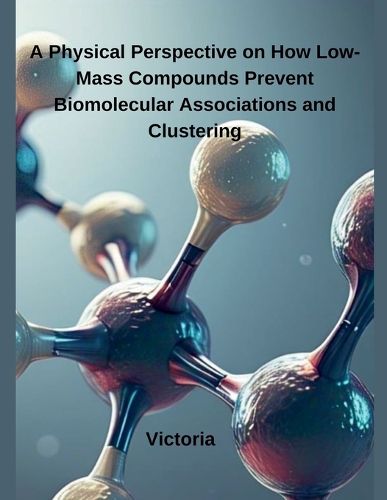Readings Newsletter
Become a Readings Member to make your shopping experience even easier.
Sign in or sign up for free!
You’re not far away from qualifying for FREE standard shipping within Australia
You’ve qualified for FREE standard shipping within Australia
The cart is loading…






This title is printed to order. This book may have been self-published. If so, we cannot guarantee the quality of the content. In the main most books will have gone through the editing process however some may not. We therefore suggest that you be aware of this before ordering this book. If in doubt check either the author or publisher’s details as we are unable to accept any returns unless they are faulty. Please contact us if you have any questions.
The reason behind the developing interest towards the study of conformational modifications in protein is due to the involvement of proteins in almost all physiological processes. Such conformational changes in protein may include folding, unfolding and misfolding that brings either functional or non-functional forms of protein. A global attitude towards protein interactions has been established in the preceding years that comprise protein-protein interaction, protein-ligand interaction, protein folding, misfolding and aggregation (Dobson, 2003; Parkin Jr and Schuller, 1972). Binding of protein with ligands is the initial and the most significant level towards any functional pathway in an organism. Ligand may be in the form of metals, ions, small chemical compounds, nucleic acid, proteins or peptides. Proteins have a propensity of forming complexes with numerous exogenous as well as endogenous compounds and their interaction alters the protein regulated functions. The protein- ligand interactions play a crucial role in maximum biological pathways, thus also offers improved prospects for therapeutic development against protein related diseases (Ahmad et al., 2013; Uversky, 2008; Varshney et al., 2010). Protein-drug interaction studies are relevant towards drug targeting and drug designing (Beddell et al., 1976). The conformational alteration in protein brought due to protein-drug interaction is being governed by the binding affinity along with the nature of drug interactions (Kitchen et al., 2004). Protein-drug interaction is imperative for the pharmacological or pharmacokinetic studies in the delivery schemes of drug (Ahmad et al., 2006; Ishtikhar et al., 2014).
$9.00 standard shipping within Australia
FREE standard shipping within Australia for orders over $100.00
Express & International shipping calculated at checkout
This title is printed to order. This book may have been self-published. If so, we cannot guarantee the quality of the content. In the main most books will have gone through the editing process however some may not. We therefore suggest that you be aware of this before ordering this book. If in doubt check either the author or publisher’s details as we are unable to accept any returns unless they are faulty. Please contact us if you have any questions.
The reason behind the developing interest towards the study of conformational modifications in protein is due to the involvement of proteins in almost all physiological processes. Such conformational changes in protein may include folding, unfolding and misfolding that brings either functional or non-functional forms of protein. A global attitude towards protein interactions has been established in the preceding years that comprise protein-protein interaction, protein-ligand interaction, protein folding, misfolding and aggregation (Dobson, 2003; Parkin Jr and Schuller, 1972). Binding of protein with ligands is the initial and the most significant level towards any functional pathway in an organism. Ligand may be in the form of metals, ions, small chemical compounds, nucleic acid, proteins or peptides. Proteins have a propensity of forming complexes with numerous exogenous as well as endogenous compounds and their interaction alters the protein regulated functions. The protein- ligand interactions play a crucial role in maximum biological pathways, thus also offers improved prospects for therapeutic development against protein related diseases (Ahmad et al., 2013; Uversky, 2008; Varshney et al., 2010). Protein-drug interaction studies are relevant towards drug targeting and drug designing (Beddell et al., 1976). The conformational alteration in protein brought due to protein-drug interaction is being governed by the binding affinity along with the nature of drug interactions (Kitchen et al., 2004). Protein-drug interaction is imperative for the pharmacological or pharmacokinetic studies in the delivery schemes of drug (Ahmad et al., 2006; Ishtikhar et al., 2014).